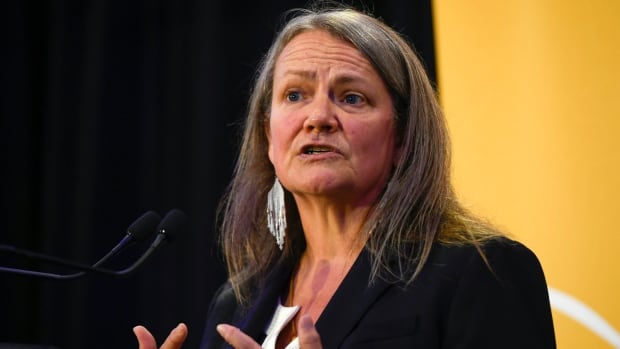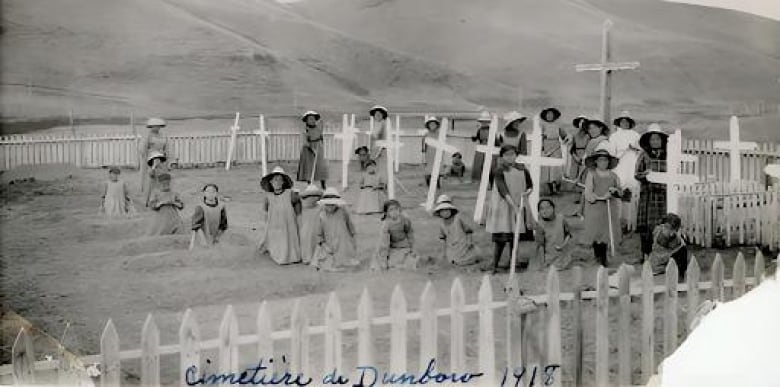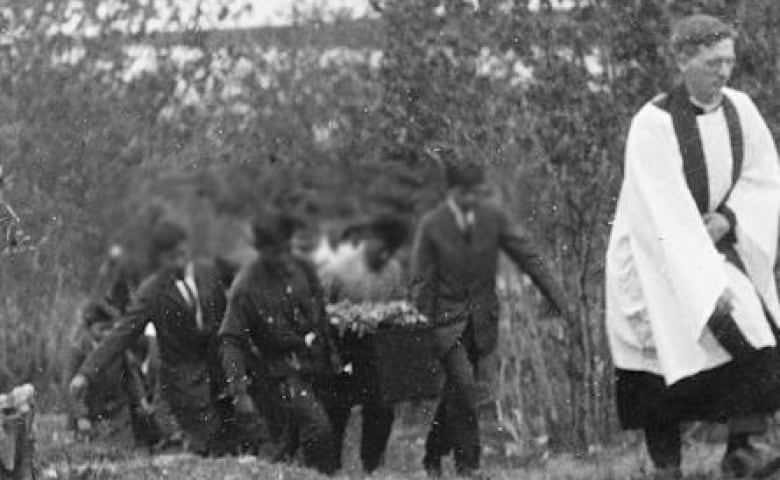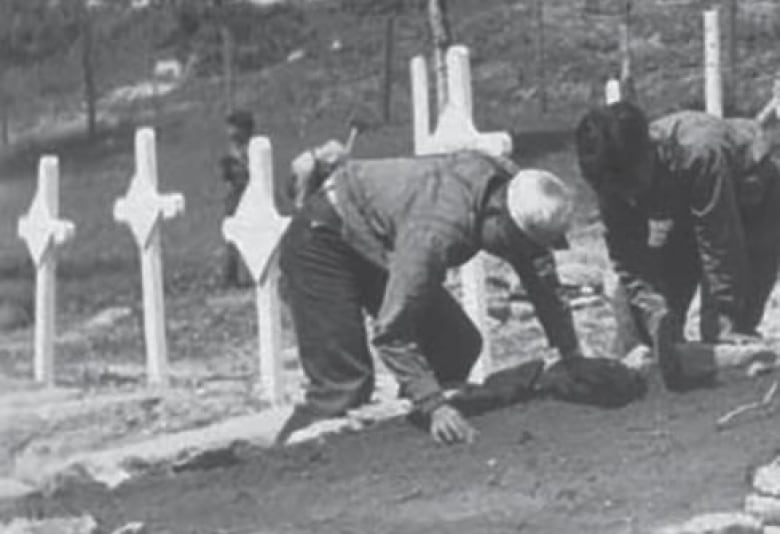
WARNING: This article contains images of residential school pupils in cemeteries.
The history of residential school burial sites is evidence of crimes against humanity that could in theory be prosecuted, the special interlocutor for missing children and unmarked burials says.
Kimberly Murray, a federally appointed official tasked with recommending a new framework for the treatment of these sites, outlines the conclusion in a report released Wednesday.
“The histories of the cemeteries that were located at former Indian residential school sites are evidence of genocide and mass human rights violations,” says the report, titled Sites of Truth, Sites of Conscience.
“The lack of care given to Indigenous children during their lives at Indian residential schools carried over to their deaths and burials.”
The historical review says government policies prioritized saving money over the humane treatment of the children who died, their families and communities.
“Government and church officials made decisions and created policies that led to the deliberate desecration of the burial sites of Indigenous children. At times, these officials even actively participated in these desecrations,” the report says.
“Through both their actions and failures to act, the government and church entities created the crisis of missing and disappeared children and unmarked burials that survivors, Indigenous families, and communities are facing today.”
In an interview, Murray said the report is meant as a companion to the Truth and Reconciliation Commission’s report on missing children and unmarked burials. The difference is that the interlocutor’s report reproduces evidence like historical records and images.
The goal is to counter denialism by demonstrating there were cemeteries, where children were sometimes made to work, at residential schools and other institutions, Murray said.
“This is meant to be an evidentiary piece of the genocide and the crimes against humanity that supplements, complements and supports what the survivors have been saying for decades,” she said.
Murray was appointed in 2022 with a mandate recently extended to October 2024. She doesn’t expect the federal government to respond officially to this report, as it doesn’t convey her final recommendations.
A spokesperson for Justice Minister Arif Virani responded to an interview request with a statement.
“We will take the time to give proper consideration to the Special Interlocutor’s recommendations as we await her final report expected this fall,” wrote spokesperson Chantalle Aubertin.
Crown-Indigenous Relations Minister Gary Anandasangaree was not available for an interview and also responded by statement.
“We acknowledge the profound pain that this report brings to light and recognize the ongoing trauma experienced by Indigenous Peoples as a result of these atrocities,” wrote spokesperson Matthieu Perrotin, when asked if the minister accepts Murray’s conclusion.
Perrotin thanked Murray for the additional piece of work and said the government is committed to supporting communities doing this work, having already supported 145 commemoration and search projects totalling $216.5 million as of June 19.
‘Antidote to denialism’
Murray highlighted three images in the report that she described as highly sensitive. The faces of children in the photos are blurred in the report to hide their identities.
One of them shows roughly two dozen children gathered in the cemetery at Dunbow Industrial School, also known as St. Joseph’s, in southern Alberta. In that photo, the children stand amid wooden crosses marking what could be children’s graves.

“Many children were buried in the institution’s graveyard; in some cases, children were buried two to three in one coffin. Children who were forced to work in the Dunbow cemetery are seen in a photograph from 1918,” the report says.
Another photo shows children carrying a casket led by a priest in Carcross, Yukon, circa 1930s. Public records suggest some children who died at Chooutla Indian Residential School along Nares Lake in Yukon were buried in the Carcross cemetery, the report says.

Another picture shows children kneeling over, and possibly tending to, a grave in the Kenora residential school cemetery in 1941.
“That was a difficult decision whether to put those photos in, because they’re very triggering,” Murray said.
“But as we say in the description, it’s like an antidote to denialism.”

The office will be making the case in its final report that “many of these children were disappeared” in the legal sense.
“And so what does that mean? That means that the state has an obligation to access and facilitate access to the truth,” she said.
“Enforced disappearance is an ongoing crime. It continues until you know the fate of the children. And we don’t know the fate of all the children at this point.”
But, she added, the records do show the manner in which some were buried.
“We’re finding, as you read the report today, that they are in mass graves, they are in common graves, they are in cemeteries, in unmarked mass graves,” she said.
“They are on the site of Indian residential schools. There’s no disputing the evidence that was hidden away in the archives.”
Murray also stressed the issue reaches far beyond residential schools, encompassing institutions like Indian hospitals, sanitoriums and reformatories where pupils were taken.
She pointed to the example of the Cecil Butters Memorial Hospital in Austin, Que., where the report says “several Indigenous children died,” and “many are buried in unmarked and mass graves in and around the former site” of the hospital.
A national Indian Residential School Crisis Line has been set up to provide support for former students and those affected. People can access emotional and crisis referral services by calling the 24-hour national crisis line: 1-866-925-4419.
Mental health counselling and crisis support is also available 24 hours a day, seven days a week through the Hope for Wellness hotline at 1-855-242-3310 or by online chat at www.hopeforwellness.ca.